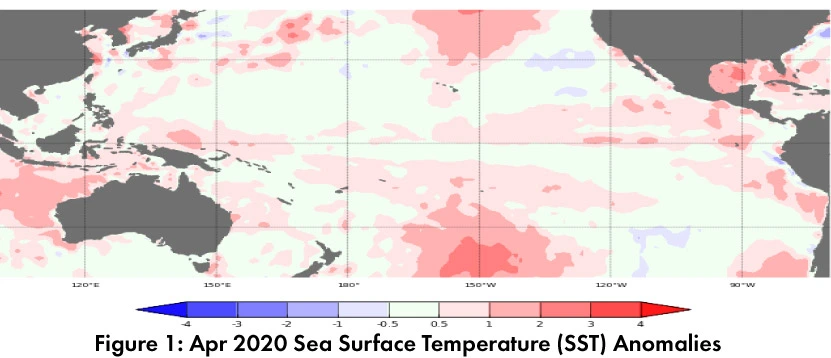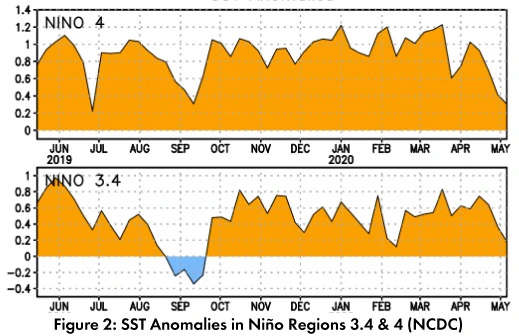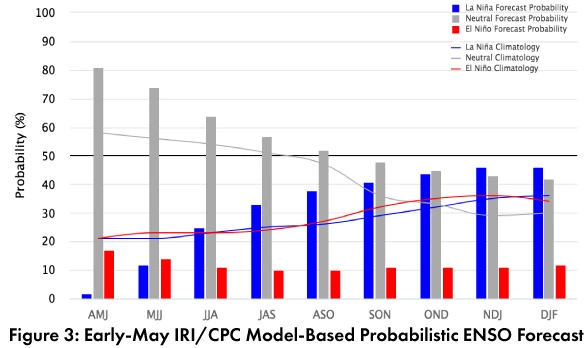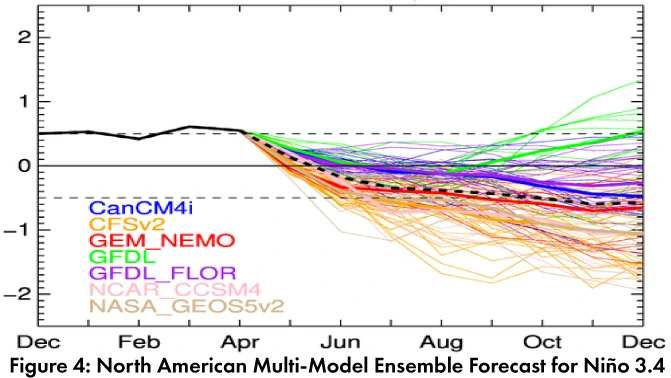Southwest Climate Outlook - El Niño Tracker - May 2020
Sea surface temperatures (SSTs) are returning to near normal across the equatorial Pacific (Figs. 1-2). Conditions are forecast to remain ENSO-neutral through summer 2020, while longer term outlooks point to the possibility of a La Niña event later in 2020.


Forecast Roundup: On May 9, the Australian Bureau of Meteorology maintained their ENSO outlook at an inactive status while highlighting a few models that suggest La Niña in 2020, but also noted: “model skill at this time of year is generally low for longer lead-times.” On May 12, the Japanese Meteorological Agency (JMA) maintained its call for a 60-percent chance of ENSO-neutral conditions to last through summer 2020. On May 14, the NOAA Climate Prediction Center (CPC) issued its ENSO diagnostic discussion with an inactive alert status. The CPC called for a 65-percent chance of ENSO-neutral through summer 2020 and 45-50% for fall 2020. On May 14, the International Research Institute (IRI) issued an ENSO Quick Look (Fig. 3), noting “model forecasts favor neutral SST conditions continuing into summer, becoming below-average but not necessarily into La Niña territory by fall.” They highlight near-average SSTs and ENSO-neutral atmospheric conditions “leaning slightly in the cool-ENSO direction.” The North American Multi-Model Ensemble (NMME) remains borderline El Niño but shows steady movement into ENSO-neutral territory through the summer, with the mean forecast approaching La Niña conditions later in 2020 (dashed black line, Fig. 4).


Summary: Despite SST anomalies hovering at the El Niño border for much of the winter, oceanic and atmospheric conditions were ENSO-neutral over this period. These conditions are forecast to remain ENSO-neutral through summer, with hints of conditions turning towards La Niña by fall 2020. The caveat is the challenge associated with forecasts during the “spring predictability barrier” (i.e. the difficulty of accurate forecasts made this time of year). While the ENSO status tends to have limited bearing on the monsoon, La Niña brings decreased chances of tropical storm activity in the eastern Pacific Ocean.
Online Resources
- Figures 1 - Australian Bureau of Meteorology - bom.gov.au/climate/enso
- Figure 2 - NOAA - Climate Prediction Center - cpc.ncep.noaa.gov
- Figure 3 - International Research Institute for Climate and Society - iri.columbia.edu
- Figure 4 - NOAA - Climate Prediction Center - cpc.ncep.noaa.gov

